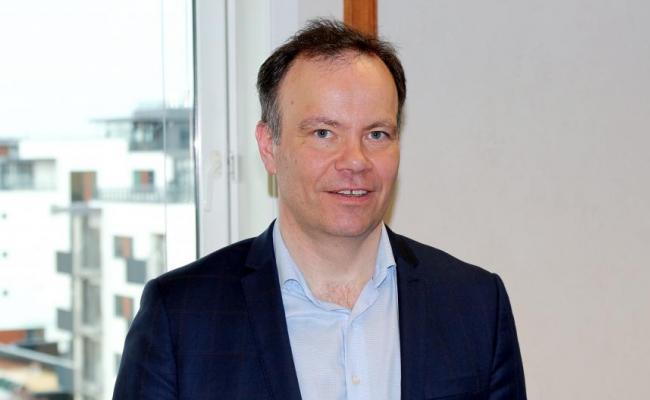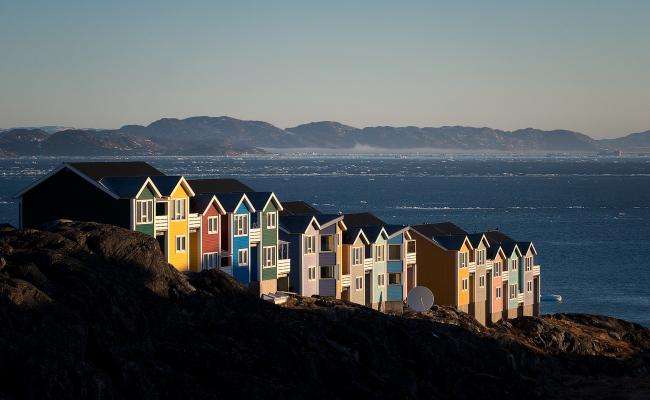More Than NOK 100 Billion to be Invested in the Norwegian Arctic This Decade

Freyr has plans about large-scale battery cell production in Northern Norway. The company expects to create some 1,500 new jobs over the next four to five years, most of these in the Helgeland region. The investment has a frame of NOK 30-40 billion. (Illustration: SENORD)
“The amounts currently invested in Northern Norway are under-communicated”, says Director Kjell Giæver of Petro Arctic. High North News has mapped the largest investment projects in the Norwegian Arctic.
The number of inhabitants in Northern Norway dropped by 2,000 persons in 2020. Today, there are as many people in Northern Norway as there were in the late 1960s.
Despite the deteriorating population development, heavy investments are taking place in the High North. All the projects mentioned in this article take place this decade and most of them are multi-billion project. You will find a full overview at the bottom of the article.
According to the Northern Norway Trend Barometer, the North Norwegian economy has grown more than the Norwegian economy during the period 2008-2018. This is in particular due to a surge in export value from natural resource industries.
“The amounts currently invested in Northern Norway are under-communicated”
Kjell Giæver, Director of Petro Arctic, argues that the amounts currently invested in Northern Norway during the Green Shift and in energy are under-communicated.
“Norway is often compared to countries like Sweden and Finland, where there is a lot going on, though we have at least as much going on here, in little Norway. As for oil and gas production, hundreds of new jobs are created in Northern Norway this decade”, he says and adds:
“Many more should look to Northern Norway. This is where it happens! Hydrogen, batteries, carbon capture with storage and use; these are neither dreams nor future visions, but a contemporary part of life many places in Northern Norway. And we who live here should be more confident that it is possible to create a future here, both in traditional industries as well as in the energy transformation that the world is facing. Many countries around us have plans, but here, things actually happen.”
Hydrogen, batteries, carbon capture with storage and use; these are neither dreams nor future visions, but a contemporary part of life many places in Northern Norway.
Erlend Bullvåg, Assistant Professor at Nord University, says there is significant interest in investments activating resources in the High North.
“There are a series of initiatives in wind power, hydrogen, batteries for transport purposes. We are witnessing a transformation of the economy towards more sustainable production, reducing emissions in the north as well as where the raw materials are ending up. The beginning of circular systems in which raw materials are recycled after use is well underway in the industry, with the Helgeland region in the lead, and it will continue growing in the coming years”, Bullvåg says.

Overview over industries creating major values in Northern Norway in 2018. (Source: Statistics Norway. Illustration: Northern Norway Trend Barometer)
In 2019, 100 persons between the ages of 18 to 34 were engaged to find answers and highlight important issues for young people in Northern Norway. Their answers were presented in a perspective report called Nye stemmer [New voices]. It appeared that many young people do not know about all the opportunities that exist in Northern Norway.
“What we should discuss more is the potential in the North and about how to realize that potential when we are ever-fewer people”, says Stein Vidar Loftås, Communications Director of Sparebank1 Nord-Norge, and adds:
“There are heavy investments in many sectors in Northern Norway, and there is a high demand for competence. However, if the young are not familiar with the potential nor the demand for workers, that will contribute to out-migration.”
If the young are not familiar with the potential nor the demand for workers, that will contribute to out-migration
The Green Shift
Stein-Gunnar Bondevik is Executive Vice President of Public Relations at Troms Kraft. He says the grid company is planning on investing between NOK 500 and 700 million annually in the coming years.
“This mirrors other activities in the region. The Green Shift leads to major changes and opportunities. We see factories popping up all over the country, and if we in the High North are to keep up, we need a grid to go with that ambition”, Bondevik says and adds:
“The Green Shift leads to new opportunities, new investments, new value chains. Electricity and power production are key in all this. We play a crucial role, not only when it comes to distribution of energy, but also in there being a balance in the market. Right now, the High North has overproduction of electricity, and we hope the new investments in the Arctic may contribute to closing this gap.”
List of scheduled investments in Northern Norway:
Hammerfest LNG: In 2018, Equinor and its partners announced that they had decided to invest some NOK 5 billion in Askeladd, the second phase of the Snow-White development. In June 2020, Equinor signed a Letter of Intent with Technip FMC regarding supplies for the development of Askeladd Vest, which is to be connected to Askeladd. Investment frame: NOK 10-15 billion.
Johan Castberg: The Johan Castberg field lies in the Barents Sea and consists of the three deposits Skrugard, Havis and Drivis. Equinor has invested some NOK 21 billion in the Barents Sea as per 21.12.2019 and is planning to invest some NOK 36 billion from 2020 onwards.
The Wisting Field: Wisting is an oil field in the Barents Sea. Equinor and its partners are scheduled to commence production by 2022.
Hydrogen factory in Berlevåg: The development of hydrogen based on wind power from Raggovidda [the Raggo Plain]. Investment frame: NOK 3-4 billion.
Ammonia factory in Hammerfest: Equinor and Horisont Energi have signed a Letter of Intent to explore the opportunity for constructing a facility to produce carbon-neutral ammonia based on blue hydrogen. According to the plan, the facility is scheduled to have a production capacity of more than one million ton of ammonia annually. Investment frame: NOK 8-10 billion.
Battery factory in Mo i Rana: Freyr has plans for large-scale battery cell production in Northern Norway. The company expects to establish up to 1,500 new jobs over the next four to five years, most of these in the Helgeland region. Investment frame: NOK 30-40 billion.
Hydrogen factory in the Salten region: Meløy municipality wants to establish a hydrogen factory in Glomfjord. Scheduled to be completed by 2023.
Andøya Space Orbital: Andøya Space Orbital is to develop and construct what may become the first commercial base for launching small satellites in Europe. The first launch is scheduled for early 2022. Investment frame: Approximately NOK 1 billion.
Wind power projects in Northern Norway
Wind power farm at Kvitfjell, near Tromsø
Hammerfest Wind Power Plant
Wind Power Plant in Tysfjord (Sørfjord Wind Power Plant, into operation in 2020)
Øyfjellet Wind Power Plant (Helgeland region, 72 turbines scheduled to be ready by 4Q 2021)
Also read
This article was originally published in Norwegian and has been translated by HNN's Elisabeth Bergquist.



